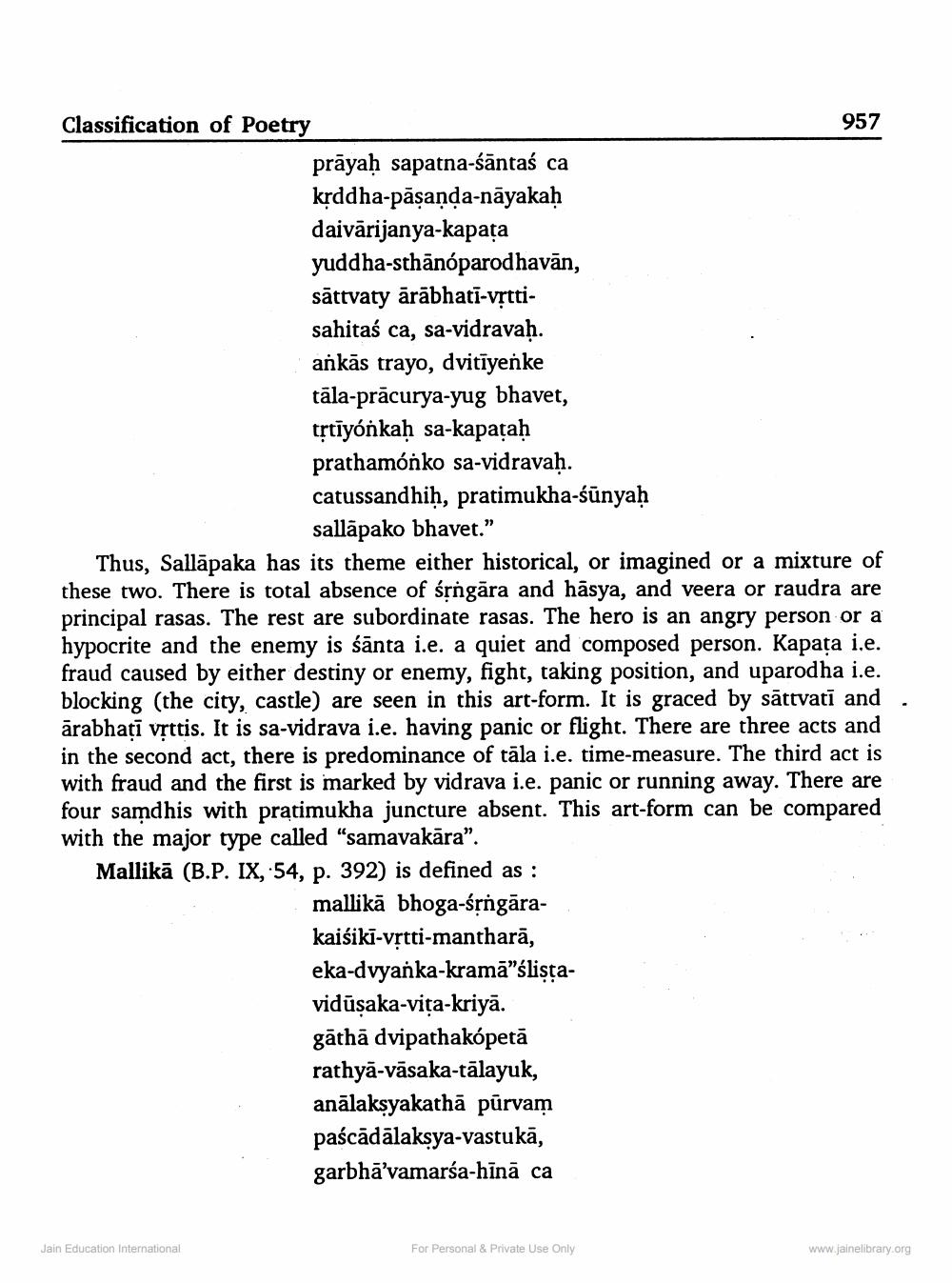________________
Classification of Poetry
957 prāyaḥ sapatna-śāntaś ca krddha-pāşanda-nāyakaḥ daivārijanya-kapata yuddha-sthānóparodhavan, sāttvaty ārābhati-vșttisahitaś ca, sa-vidravaḥ. ankās trayo, dvitīyenke tāla-prācurya-yug bhavet, tětiyónkaḥ sa-kapataḥ prathamónko sa-vidravaḥ. catussandhiḥ, pratimukha-śūnyaḥ
sallāpako bhavet.” Thus, Sallāpaka has its theme either historical, or imagined or a mixture of these two. There is total absence of śrngāra and hāsya, and veera or raudra are principal rasas. The rest are subordinate rasas. The hero is an angry person or a hypocrite and the enemy is śānta i.e. a quiet and composed person. Kapata i.e. fraud caused by either destiny or enemy, fight, taking position, and uparodha i.e. blocking (the city, castle) are seen in this art-form. It is graced by sātrvati and ārabhati vịttis. It is sa-vidrava i.e. having panic or flight. There are three acts and in the second act, there is predominance of tāla i.e. time-measure. The third act is with fraud and the first is marked by vidrava i.e. panic or running away. There are four samdhis with pratimukha juncture absent. This art-form can be compared with the major type called "samavakāra”. Mallikā (B.P. IX, 54, p. 392) is defined as :
mallikā bhoga-śrngārakaiśikī-vștti-mantharā, eka-dvyanka-kramā”ślistavidūşaka-viţa-kriyā. gāthā dvipathakopetā rathyā-vāsaka-tālayuk, anālakṣyakathā pūrvam paścādālaksya-vastukā, garbhā'vamaría-hīnā ca
Jain Education International
For Personal & Private Use Only
www.jainelibrary.org




